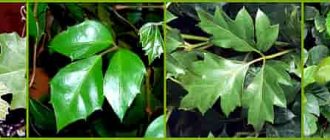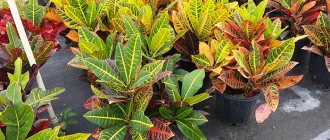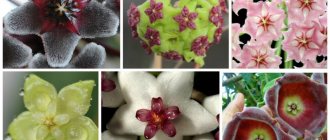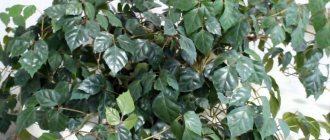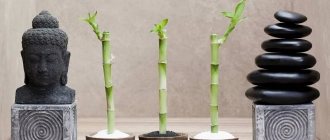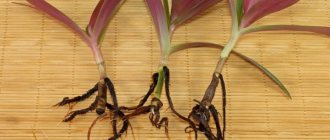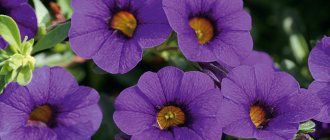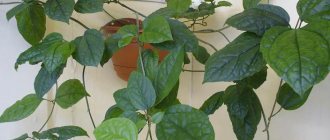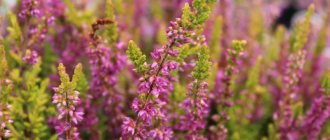Houseplants give your home a very special atmosphere, enliven rooms and make you feel closer to nature. They are also indispensable in work areas - any faceless and uncomfortable office will be transformed if it is slightly refreshed with the help of various ficus, vines or violets.
There is also a separate direction of design art, when, with the help of the right combination of indoor plants, an exclusive design is created, designed to emphasize the main idea of each specific room.
Birch is a houseplant that many green pet lovers have. She attracts with her unpretentiousness and ability to adapt to a wide variety of conditions.
What type of birch tree is it?
Birch is a houseplant belonging to the Cissus genus, which includes more than 350 species of shrubs, subshrubs and creeping vines. The genus name is the Greek word kissos, which translates as ivy. Cissus have nothing to do with ivy as a species, but are called so solely because of the similarity in appearance.
The most famous representatives of this genus of plants are cissus antarcticus, or, as it is also called, indoor grapes (a vine with large oblong dark leaves); cissus variegated (a liana distinguished by its richness of colors: stems are red-violet, leaves are green-red with a barely noticeable silver pattern) and cissus rhombifolia (birch).
Cissus rhombifolia is a widespread herbaceous vine with complex diamond-shaped leaves and thick brownish fluff on the stem. Birch flowers are small, collected in inflorescences in the axils, from which edible red berries later ripen. Unfortunately, at home, rhombifolia cissus does not bloom or bear fruit.
How to make a phytowall from a birch tree
Landscaping an apartment or house is not only a beautiful design, but also an excellent air filter that can be installed in any room: office, home office, children's room or living room.
Making a phytowall yourself is not at all difficult. To do this, you need to purchase a phytoblock (phytomodule). The structure does not need to be connected to water supply or electricity, so it can be placed in any convenient place in the apartment.
The phytoblock must have several parts:
- Sturdy wide frame. It is necessary to ensure that the plant does not adhere to the wall, which can cause mold due to poor air circulation.
- A layer of polyethylene or other material that does not allow moisture to pass through.
- Fabric with small pockets. The fabric for the canvas should be very durable; it is best to purchase synthetic felt. It does not deteriorate so quickly from exposure to moisture.
- A tray is required to collect water from below.
How to assemble a phytoblock correctly
You need to sew a rectangular fabric. One edge needs to be folded and stitched in several places to create pockets. Their size and depth depend entirely on the taste of the owners. For sewing, you need to take nylon threads - they are the strongest.
The finished canvas should be glued to a plastic board. Plastic will serve as additional protection against moisture.
You need to secure the frame at the selected location. To do this, you can use a block coated with a layer of special antiseptic. The block can be replaced with an aluminum profile. In order for there to be normal air circulation between the wall and the structure, a small gap should be left - approximately 2-3 cm.
A tray must be attached to the bottom of the structure to prevent moisture from dripping onto the floor after watering.
How to green a phytostructure
In order to green the finished structure, you should carefully remove the rhizissus from the containers. You need to clean off excess soil from the roots, then carefully wrap them in a damp cloth. Prepared plants are placed in pockets on the canvas. After some time, the flowers will grow their roots into the fabric, so they cannot be touched.
The indoor birch plant is a decorative flower that is suitable for any room. It does not require much attention, but brings great benefits to a person, moisturizing and purifying the air from harmful impurities.
- Read: How to grow asparagus at home
Be healthy, dear readers!
Reproduction
Is it possible to easily propagate ivy like birch? A houseplant of this species is very easy to propagate at home. To do this, you can use young shoots from the top of the plant with several internodes. They need to be placed in warm water to form roots or planted in special soil - a mixture of sand and peat. For better rooting, cuttings should be kept warm, at a temperature of 20 ° C.
For propagation, you can use not only apical shoots, but also unnecessary branches remaining after routine pruning of plants. Old and bare branches are cut off in the spring; this procedure is necessary so that the vine has an attractive appearance. After rooting, the shoots are transplanted into nutrient soil.
Reproduction of Rocius
Birch trees have two methods of reproduction:
- Using cuttings. It is best to do this in spring, when new branches appear on the vine. The cuttings should be carefully trimmed so that at least two internodes remain. All cut cuttings should be placed in a container with a damp mixture of sand and peat. After 12-14 days, the plants will be ready to be transplanted into a normal container.
- With the help of shoots. After winter rest, the plant must be cleared of old shoots and slightly rejuvenated. Cut branches can be placed in water until roots appear, and then transplanted into pots with suitable soil.
Additional care. In order for the birch tree to be more magnificent, it is necessary to pinch the tops of the stems. Birch lashes need support, then they develop much faster.
Possible pests and their control
House plants, even the most unpretentious ones, also suffer from attacks by pests, among which are:
- Leaf aphid. Many house plants suffer from these small insects. Getting rid of them is very simple: you need to make a strong solution of laundry soap and spray the flower with it. It is easy to detect aphids; you just need to carefully examine the underside of the leaves.
- Spider mites appear on grassy vines when watering is improper, when the plant lacks moisture. The main sign of the presence of mites is the appearance of small cobwebs on leaves and shoots. You need to fight ticks using a special product sold in stores. In addition, the plant needs to be returned to proper watering.
- Scale insects are a rather dangerous pest for indoor plants. It usually lives on stems and leaves, and is sometimes found on stems. The insects have an oval shape and a flat body, the lower part fits tightly to the plant. There are two types of scale insects: false and true. Real ones know how to hide under their shells, like turtles, but false scale insects do not have this ability. The reproduction rate of scale insects is high, so colonies appear very quickly. They suck the juice from house plants, causing them great harm. If you don’t start fighting them in time, the vine will die. Means for exterminating scale insects can be purchased at gardening stores.
- The fool is white. This insect lives in soil, especially in soil that contains a lot of humus. It has an elongated body on which small antennae are visible. It feeds on plant remains, but does not disdain living roots. Because of this, the plant can become sick and wither, and eventually die.
- Mealybugs. These small worms are white in color and like to settle on the back of leaves, closer to the passing vein. Female scale insects are larger, their size reaches 0.5 cm. They make homes for their numerous offspring; the houses look like cotton balls. Females store eggs in them. Usually these insects do not live on vines, preferring cacti and azaleas to them, but if a birch tree is adjacent to these flowers, they can settle on it.
Light level and temperature conditions
Houseplants can be light-loving or shade-tolerant. The birch tree tolerates both sun and shade equally easily, but in general it is more inclined towards the latter. At the same time, it does not like direct sunlight, so if the pots indoors are on window sills, it is better to place them on a window on the north side.
You should never forget that the birch tree is a houseplant. Caring for it involves not only timely watering and replanting, but also knowledge of some of its features. For example, the fact that, unlike many indoor plants, the birch tree does not need to be moved to the balcony for the summer. This pet does not like drafts and does not welcome air baths in open space.
The optimal temperature in the warm season is from 18 to 25 ºС. In winter - no more than +16...+20 ºС, while when ventilating it is important to prevent cold air from entering the plant.
What diseases can indoor birch have?
What to do if the plant is sick. Carefully inspect the vine if:
- Leaves lose their color. The reason for this may be a lack of nutrients in the soil. It is necessary to change the fertilizer or increase its amount.
- The foliage becomes wrinkled and covered with dark spots. The reason is insufficient watering and dry air. For the same reason, sheet plates can become deformed, bend inward or outward.
- The leaves began to dry out and the shoots began to shrink, which means there is too much watering or the air in the room is very humid.
- If the plant leaves abundantly, then root rot or sharp fluctuations in temperature in the room are to blame.
- In the cold season, the flower grows slowly, and this is completely normal. If he doesn’t grow well in the summer, it means he doesn’t have enough nutrition from the soil and should be fed.
Watering mode. Humidity
Birch is a rather unpretentious houseplant and easily adapts to many negative factors, but not to lack of water. The vine should be watered abundantly, but carefully. She does not like excessive moisture and stagnation of water in the pot, and even more so the soil should not be allowed to turn into a dry lump of earth. It is believed that a birch tree needs to be watered every day in summer, and 2-3 times a week in winter, but this is a controversial point. In summer, when the temperature is fairly low and even, the plant may not need to be watered for 2-3 days, but in winter, with active heating, the soil can dry out within a day. So watering indoor plants needs to be adjusted to specific conditions.
But what Cissus rhombifolia will never refuse is a warm shower. Birch, for all its immunity to mild temperature fluctuations, does not tolerate low air humidity. This phenomenon is smoothed out with the help of water procedures: a small plant is watered from the shower in the bathroom, and long vines, which are difficult to move, need to be sprayed more often.
Possible problems in growing birch trees
It is easy to determine why certain metamorphoses occur with roisissus, since the plant reacts to changes in the microclimate of the room.
What diseases and parasites can affect a flower:
- Lack of humidity often leads to the appearance of fungal diseases that can affect the above-ground and underground parts of the specimen.
- Poorly disinfected soil can become the basis for the appearance of scale insects and dust mites.
- If the leaves begin to dry, then infection with root rot is possible. This problem occurs if the substrate does not allow air to pass through, there is no drainage and excess water stagnates in the pot.
- A frequent “guest” is powdery mildew. But the disease can only affect plants that are weakened after a sharp temperature change.
Diseases of indoor birch
Crohn's can be treated with a soap solution against any type of parasites and infections, but if the form of the disease is not advanced. If this does not help, then special means must be used to combat the disease.
The decorative version of roisissus is an ideal option for breeding by inexperienced gardeners who want to decorate their home with a floral arrangement. An ideal option for such a plant would be a house with “tropical” climate conditions. The plant does not require special care; it reproduces using the elementary method.
How to fertilize correctly
The most intensive growth of the birch tree occurs in the summer, so it needs additional nutrition at this time of year. Fertilizing is done with universal complex fertilizers for houseplants approximately once every 2-3 weeks. In addition, in spring and summer, a complex agent for growth and increase of green mass is added to the spraying water. It is also used once every 2-3 weeks. It is important to know that you cannot fertilize and spray with water and the preparation at the same time, as this can cause burns on the foliage and roots.
How to propagate rhombifolia and other species of this plant?
The decorative foliage crop, numbering more than 300 species, develops well in indoor conditions and is very easily propagated in simple but effective ways. To root a home flower, it is enough to learn several common agrotechnical techniques.
Reference! Cissus rhombifolia is an evergreen indoor vine, which got its name due to its complex leaf plates (diamond-shaped) divided into 3 parts. Long, flexible stems covered with fleecy pubescence of a reddish hue give additional attractiveness to the home flower.
How birch trees propagate by cuttings: nuances of cuttings
The following describes how to properly take cuttings from a home vine. Green shoots for plant rooting are harvested during the active growing season (spring-summer season). Cuttings with three to four buds are ideal for this procedure . Rapid rooting is facilitated by treating the cut site with any preparation containing phytohormones:
- Kornevin;
- Heteroauxin;
- Zircon;
- Epin et al.
Folk remedies are also suitable as growth stimulants:
- honey;
- aloe juice;
- potato;
- yeast;
- willow water.
Cissus stems treated with growth stimulants are germinated in two ways.
- In the first case, the cutting is placed in a glass or jar with settled (filtered, rain) water. The vessel with the shoot is left in a well-lit room at a temperature of 18-20 °C. After a few days, young roots will begin to form on the cuttings.
- For the second germination option, you will need a container (pot) filled with a drainage layer and loose, nutritious soil.
The soil mixture is moderately moistened using a sprayer. The treated shoot is buried 2-3 cm into the ground and covered on top with a glass jar or a cut plastic bottle (transparent). A “mini-greenhouse” will speed up the rooting process. The planting container, as in the first case, is left in a warm and bright room. The shelter is opened slightly once a day for 10-15 minutes for ventilation. The soil is moistened as necessary. After about a week, roots will appear on the germinated cuttings. In a glass vessel this is easy to determine visually. And on shoots planted in the ground, the result will become noticeable when young leaves begin to appear.
In both cases, shoots with tender roots are carefully transplanted to a permanent place (pot, hanging flowerpot).
Attention! In one container (in water or soil) you can simultaneously root several cuttings (3-4 pieces).
By layering
The climbing crop takes root easily by layering. To do this, it is enough to slightly bury part of the stem from the lower tier of the plant into the top layer of soil and secure it with a metal bracket. The soil at the rooting site should be loose and moist.
This germination method can be used both for propagating cissus and for forming a denser crown.
The climbing shoots of indoor vines are divided along their entire length by nodes on which tendrils and aerial roots are formed. When propagating by layering, this particular part of the plant is buried in the soil.
Dividing the bush
The tropical crop grows rapidly, forming basal suckers . In order to propagate cissus by dividing the bush, you can separate any lateral shoot with the root and transplant it to a new place. The most convenient way to do this is when transplanting an adult plant into a new, larger pot. This procedure is carried out as needed (at least once every 2-3 years).
How to replant a birch tree
Cissus rhombifolia needs to be replanted in the spring, but this procedure is not necessary every year. As a rule, a birch tree is replanted every third year, and the rest of the time the soil is simply loosened well and filled with fresh soil.
A slightly larger pot is taken to accommodate the increased mass of roots. The container should be ceramic: recently, plastic flowerpots have been increasingly used, which is not entirely correct, since they do not allow air to pass through, and the soil in them becomes sour, because evaporation is only superficial.
At the bottom of the container you need to lay a layer of drainage 2 cm thick. Then the pot is filled with soil to 1/3 of the volume and the roots of the plant are laid. Then they are sprinkled with earth: the roots should lie at a depth of at least 2-3 cm from the surface. The soil on top is not compacted.
You can buy the soil mixture in the store (consultants will recommend the right option) or prepare it yourself. To do this, you need to take two parts of turf soil, two parts of humus, two parts of sheet soil and one part of coarse sand to improve drainage properties.
How does a birch tree reproduce?
Azalea - home flower, description of varieties
Roicissus can reproduce in two ways - cuttings and shoots. The methods are almost identical and differ only in the method of rooting. To carry out the procedure, twigs that were cut in the spring are used.
Reproduction by cuttings
Rooting cuttings
Propagation by cuttings is the most popular option for propagating plants. Branches with 2-3 well-developed leaves are used as a base. Next, the following procedure is carried out for good rooting:
- Pour some drainage compound and a suitable substrate into a small plastic pot.
- Place the prepared specimen in a pot.
- The branch should be covered with soil to a depth of 3-4 cm.
- Spray the top of the substrate.
In order for the cutting to take root, you need to place the “blank” in a room with a temperature of at least +20 degrees. The room should have partial shade. Every day you need to spray the soil to maintain normal moisture.
Birch (houseplant): diseases and pests
One of the most common pests for birch trees is spider mites. It appears in conditions of low air humidity. Another widespread “freeloader” is the leaf aphid, which is clearly visible when you carefully examine the back of the leaves. You can get rid of both pests by washing the plant with a soapy solution (10 g of laundry soap per liter of warm water). If this does not help, then an insecticide can easily cope with the problem.
How can a birch houseplant get sick? The leaves dry out, wrinkle and turn brown - this is not a disease, but insufficient air humidity. The plant needs to be sprayed and bathed more often. Is the plant wilting and looking unhealthy? You need to take a closer look at the roots: perhaps they are suffering from root rot due to excessive watering. In this case, removing part of the rotted root system and replanting it in new healthy soil will help. Leaf mold occurs due to poor drainage.
Pests
For Cissus rhombolifolia, the greatest danger is posed by:
- Spider mite . It destroys plantings with tremendous speed, but it is very difficult to notice such a pest right away due to its tiny size. It appears at low air humidity. To get rid of it, you need to wash the leaves with soapy water or use a special insecticidal preparation.
- Mealybug . It is considered the most dangerous insect pest. It is afraid of moisture, so it is worth spraying the leaves with water or wiping them with a damp cloth on both sides.
- Shield . Appears when care rules are not followed. To return to its previous appearance, special treatment should be carried out, regular watering should be established and the soil should be loosened in a timely manner.
- Aphid . It is easy to notice due to its appearance. A dangerous parasite feeds on the sap of the plant, which leads to its death. You can get rid of them by spraying with a solution of soap and wood ash, as well as insecticides.
- Whitefly . Most often they can be seen in a greenhouse or conservatory. Its larvae suck up the juice and then secrete a sweet liquid. Cannot be removed with water or chemicals.
Myths about ivy
What interesting things can you tell about this type of ivy, like birch? Is it possible to keep a houseplant at home if so many scary fairy tales have been invented about it? Popular superstitions say that ivy (and all similar plants) should not be kept at home, as they survive men. And not just all males, but husbands. Later, this legend was transformed: they began to believe that ivy in the house is a sign of divorce, usually due to infidelity.
Currently, the birch tree has become more attractive from the point of view of the field of subtle spheres: it is believed that cissus promotes creativity, the emergence of new ideas, and increased immunity.
The last statement is also true from a purely scientific point of view - in addition to its decorative function, birch improves the ecology of the room: it purifies and humidifies the air, kills harmful microorganisms and absorbs some harmful substances, for example, formaldehyde. So you can safely keep a birch tree at home.
What does ficus birch look like?
Ficus benjamina (Ficus benjamina), and the common people ficus birch belongs to decorative foliage plants from the Mulberry family. It is often used for indoor landscaping.
This plant is a large bush or tree, the lush crown of which consists of erect and drooping decorative shoots.
They bear graceful ellipse-shaped leaves with a pointed tip of a single green or variegated color. The standard leaf length is from seven to twelve centimeters. The sunken central veins are clearly visible. Young leaves are softer and lighter than mature ones.
In an apartment, the ficus "Birch" can grow up to two meters. They have very developed roots, which must be taken into account when choosing a planting container. There are many known species and varieties of Ficus Benjamin, the differences of which are in the size, shape and color of the leaves, as well as in the degree of adaptability to outdoor or indoor growing.
Proper care of ficus
Ficus plants are quite capricious in their maintenance, but providing them with proper care is not difficult. It is enough to follow some rules:
- The soil. Many gardeners recommend purchasing a ready-made soil mixture for fixings, which contains peat, sand and leaf soil in equal parts. You can also prepare mixtures yourself by mixing leaf peat, turf soil and sand in equal proportions, or peat (2 parts), leaf soil (1 part) and humus (1 part).
- Irrigation. The roots of the ficus "birch" need constantly moist soil, so watering is carried out regularly, as the soil dries out to a fifth of the pot. Water should be poured not into the center, but along the edges of the pot in portions so that the soil is evenly saturated. Excess water is drained from the pan. Mature specimens can be stirred into water so that the ground draws out the required amount of moisture. In winter, watering is reduced, but the soil is not allowed to dry out.
- Feeding. The main nutritional supplement for the birch tree is given in the first half of spring (once a month), when the period of active growth of the plant begins. Subsequent fertilizers are maintenance and gradually increase in frequency: first up to once every three weeks, and then up to twice a month. For fertilizing, you can use a complex universal fertilizer for decorative deciduous plants. Stop adding food if the plant has lost its leaves in winter. Ficus plants also react positively to sugar feeding - the foliage becomes shiny and rich. Sugar is sprinkled on the top layer of soil or added to irrigation water.
- Trimming. A necessary element of ficus care is pruning to form a crown. With the help of pruning, you can achieve various shapes, but the most often formed are: spherical, bushy, tiered, sculptural, bonsai style. Pruning is carried out in the spring and the first month of summer, when the plant is actively developing. The age of the ficus should also be taken into account. Young plants are easier to shape and tolerate intervention more easily. Pruning is required if the ficus has grown greatly and has lost its attractiveness. If pruning is not necessary, then in the spring you should remove damaged and shriveled branches, as well as elongated shoots growing inside the crown. If this procedure is neglected, heat and air exchange in the crown becomes difficult, and the risk of plant infection by parasites and diseases increases.
When carrying out the pruning procedure, you need to follow a number of rules:
- Maintain the natural appearance of the flower.
- Use sterile instruments.
- Do not injure the bark.
- Maintain the angle of the cuts towards the top.
You can form a unique crown by interweaving trunks. To do this, one pot should contain several young specimens, approximately equal in size. During the growth process, the shoots twist together and fix the plexuses with a cord. When the trunks get used to the desired position, the fastenings can be removed.
Which place to choose for cissus
The place where the flower will be placed in the room is also of great importance. You need to pay special attention to its placement, since it is believed that it is better to place the “birch tree” in the room where all family members spend the most time communicating with each other. This, for example, could be the kitchen or living room.
If an indoor “birch tree” is placed in the room where a student or schoolchild lives, then he will absorb a lot of material to study faster and it will be easier for him. If there is a sick person in the house, then a pot of cissus should be placed in his room, since this plant will not only take away negative energy, but will also help him get better.
Found a violation? Report content
